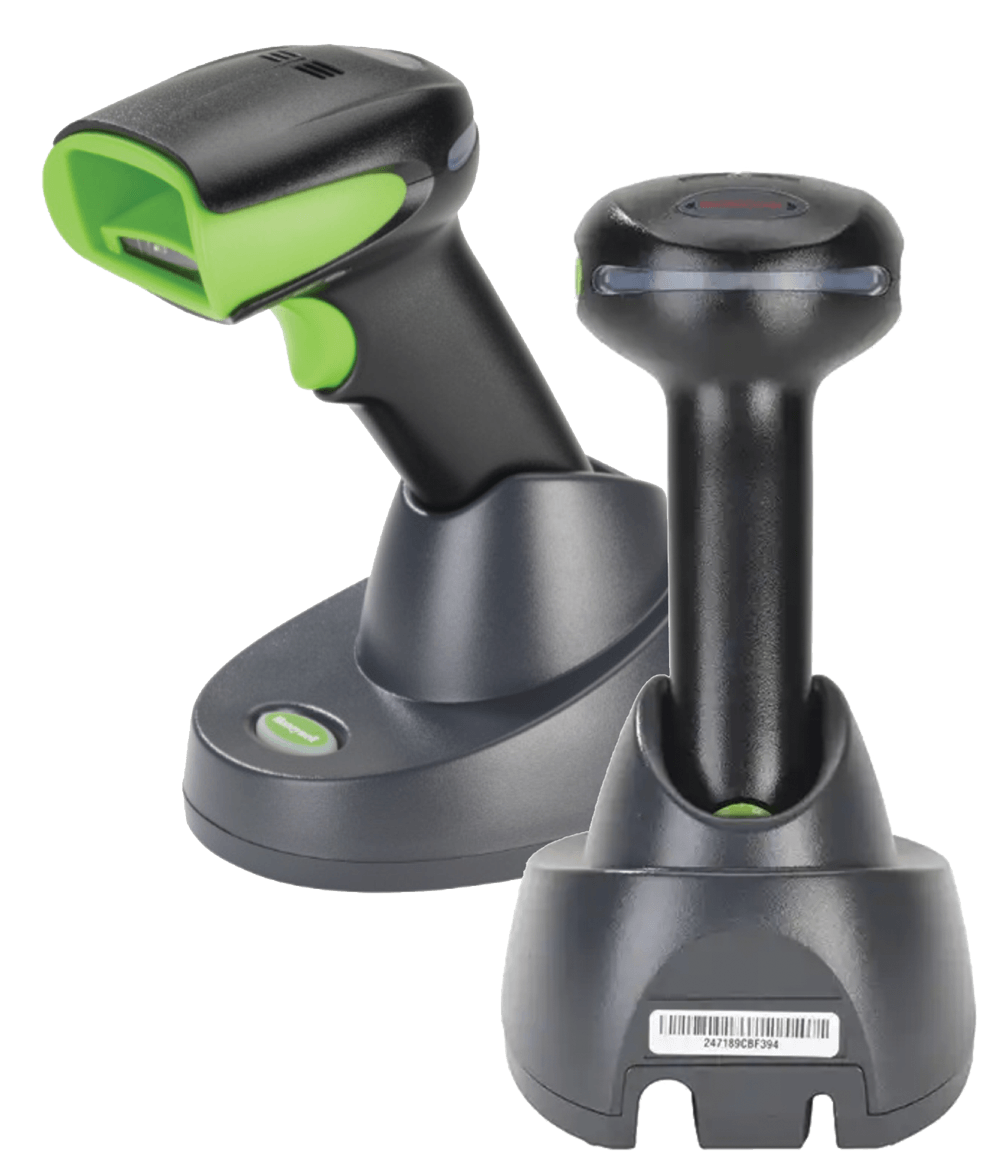Battery-free Scanning is Good News for Retailers.
Faster, Easier, Greener.
Optical Phusion introduces the Xenon 1902 battery-free scanner from Honeywell. Ideal for retail and warehouse, this ground-breaking product delivers the freedom of wireless without the cost and hassle of replacing lithium-ion batteries.



Battery-Free means Hassle Free!
The maintenance of batteries is
costly and time consuming. The Xenon 1902g-bf battery free eleviates all of these issues.
For general purpose wireless scanning customers who have experienced the hassles and high maintenance cost of Lithium-ion batteries management, as well as for companies interested in being more environmental friendly, Xenon 1902g BF incorporates the battery free innovative technology into an unique on the market scanning solution, improving productivity and customer satisfaction.
Replacement Batteries
Batteries will need to be replaced at least
once during the life of the scanner (5+ years)
Charging Time
Charging the scanner to usable service is time consuming and impacts productivity.
Spare Battery Pool
Many retailers find it necessary to keep spare batteries on hand to avoid device down time.
Shipping Restrictions
Restrictions on shipping lithium-ion batteries increases shipping costs.
Extra Weight
Lithium-ion batteries add weight to handheld wireless scanners.
No Replacements
There are no batteries to replace and the super caps support a minimum of 500,000 recharges.
Charges Quickly
No charge to ready-to-scan in under 15 seconds, full charge in 60 seconds.
Elimnates Spares
There is no need to keep any spare replacement batteries on hand.
No Resctrictions
Shipping the Xenon 1902g requires no extra paperwork, shipping costs or hassles.
Lighter Weight
The absence of batteries makes the Xenon 1902g much lighter than battery-powered scanners.

How it works
The Xenon 1902 is powered with a supercapacitor. Supercapacitors store energy electrostatically on the surface of a conducting material. This contrasts with lithium-ion, lead acid and other batteries, which produce power through a chemical reaction.
OPI’s partner Honeywell adapted and refined supercapacitor technology for use in these lighweight, handheld scanners. The power needed to run a traditional handheld scanner can be produced by a supercapacitor that is smaller than the lithium-ion battery typically used in such devices, without any trade-off in scanning performance.

Ready in Seconds
How often have you experienced running out of “battery” and had to recharge the scanner in the middle of a transaction or at the beginning of a shift? With the Xenon 1902, this is no longer a problem!
The Xenon 1902g-bf base has both standard USB and external power supply ports. The scanner typically can go from no charge to ready-to-scan in under 15 seconds with powered USB or external power supply and less than 25 seconds with standard USB. A full charge takes only 60 seconds with powered USB or external power supply. Downtime for charging is virtually non-existant!
Understanding Supercapacitors
Supercapacitors store energy electrostatically on the surface of a conducting material. This contrasts with lithium-ion (li-ion), lead acid and other batteries, which produce power through a chemical reaction. A supercapacitor includes two plates that are suspended within an electrolyte (supercapacitors are also called double-layer capacitors, which is a reference to the two plates). When voltage is supplied, the plates serve as electrodes, with one attracting negative ions and the other positive ions. The amount of energy that can be stored depends on the size of the plates. The power needed to run a traditional handheld scanner can be produced by a supercapacitor that is smaller than the lithium-ion battery typically used in such devices.
To understand why scanners with supercapacitors are an environmentally friendly and operationally efficient option for retailers, consider that in a typical retail point-of-sale a handheld scanner powered by a lithium-ion battery would need to be recharged approximately once a day and lithium-ion batteries have a lifespan of approximately 500 discharge/recharge cycles. If the scanner was expected to remain in service for only three years, the battery would need to be replaced twice, adding between $80 and $120 to the direct cost of owning the scanner. This cost does not account for the labor required to replace batteries and dispose of the old ones, the potential productivity loss from scanner battery failure, or the cost of maintaining a pool of spare batteries.
“… alternative energy storage technologies, are challenging the dominance of lithium batteries.
This is the case with supercapacitors, which are an emerging energy storage technology whose characteristics make them strong candidates for satisfying those specific functions where lithium batteries underperform.”
— IDTechExeith, Batteries & Supercapacitors in Consumer Electronics 2013–2023: Forecasts, Opportunities, Innovation
Ready to get started?
Contact OPI today!

